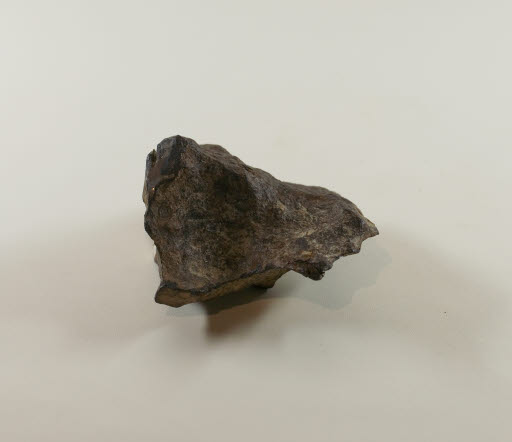| Description: |
METEO-RIGHT OR METEO-WRONG? Here's all we know about specimen #1288.1: the record states that it is a "piece of meteor from Nevada" donated on September 17, 1945. But how did the donor identify it as a meteorite? Can we confirm this? Below are some questions provided by Portland State University's Cascadia Meteorite Laboratory that help us identify our specimen: Most meteorites contain significant Fe-Ni (iron, nickel); they are solid and compact. Clue: This specimen attracts a magnet - and is heavy. Meteorites are seldom round after having entered the earth's atmosphere from space. Entering the earth's atmosphere causes intense friction, melting and then cooling the meteorite surface. This creates a "fusion" coating - essentially a thin glass shell, which may be black or brown, dull or shiny. The coating usually contrasts in color and texture to exposed interior material. Meteorites are rare, but Melinda Hutson, curator at the lab "strongly suspects that our specimen is a little iron meteorite" based on this series of questions. To know for sure, the specimen would have to undergo scientific analysis. Until then, Cascadia Meteorite Lab concurs with the donor's original claim that this is a meteor-right! |
